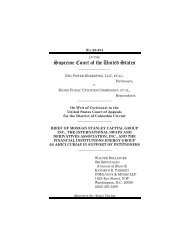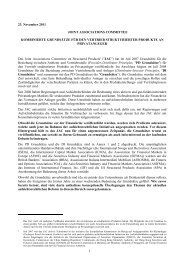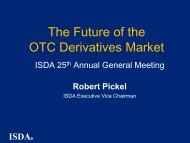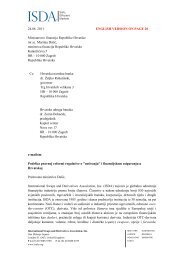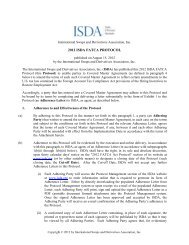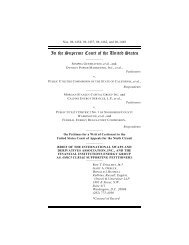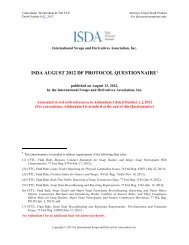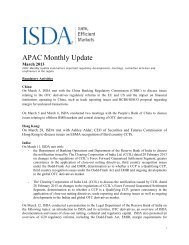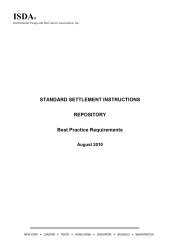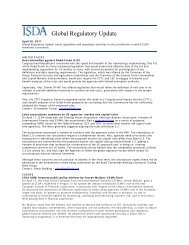ISDA Margin Survey 2013
ISDA Margin Survey 2013
ISDA Margin Survey 2013
Create successful ePaper yourself
Turn your PDF publications into a flip-book with our unique Google optimized e-Paper software.
10<br />
re-use collateral, and what percentage of collateral received in connection with OTC derivatives transactions is<br />
rehypothecated.<br />
Table 2.2 below summarizes responses to the question of where IA is held. IA is analogous to initial margin<br />
required by futures clearinghouses to collateralize potential counterparty exposures. Like initial margin, IA is<br />
designed to protect against the gap risk that may arise between margin calls 4 . It should be noted that although<br />
the terms “Independent Amount” (bilateral) and “Initial <strong>Margin</strong>” (clearing) can be thought of as equivalent and<br />
are often used interchangeably in the market, this superficial equivalence should not give the impression that<br />
they are calibrated similarly. To the contrary, IA and IM exist in two totally different contexts: IA provides<br />
protection against default loss in conjunction with bilateral Variation <strong>Margin</strong> and regulatory capital; whereas IM<br />
provides protection in conjunction with clearinghouse Variation <strong>Margin</strong> and the rest of the clearinghouse<br />
“waterfall” 5 .<br />
<strong>Survey</strong> respondents reported that most of the Independent Amount is not segregated, with 64.9 percent of IA<br />
received and 69.2 percent of IA delivered being comingled with variation margin. Holding of IA and variation<br />
margin together continues to be industry standard both contractually and operationally. However, although<br />
segregation of IA is not currently mandated within regulation (the Dodd Frank Act in the US and proposals in<br />
Europe provide that segregation should be offered to clients), it is interesting to note that the ability to<br />
segregate has been made increasingly available to counterparties over the past years on a voluntary basis, and<br />
has led to adoption of 35.1 percent of IA received and 30.8 percent of IA delivered being segregated in some<br />
respect. Respectively, this is an increase of 8.9 and 3.0 percentage points over last year’s results of 26.2 and 27.8<br />
percent.<br />
Since IA segregation has been offered by firms on a voluntary basis for several years at this point, this suggests<br />
that as market participants have evaluated the balance of risks and costs inherent in over-collateralization (as IA<br />
and IM both create) only about one-third have elected to bear the additional cost of segregation in preference<br />
to managing the additional risk of over-collateralization. This is interesting in the context of forthcoming margin<br />
regulation which may dramatically increase the amount of IA, and mandate the offering of segregation.<br />
4 <strong>ISDA</strong> released an Independent Amount Whitepaper that contains a comprehensive analysis of the issues surrounding<br />
Independent Amounts. See, "Independent Amounts," <strong>ISDA</strong> (March 1, 2010), at www.isda.org.<br />
5 The waterfall of protections against default impacting a clearing house is: (a) Variation <strong>Margin</strong>, (b) Initial <strong>Margin</strong> of the<br />
client, (c) Initial <strong>Margin</strong> of other clients in some CCP models, but not all, (d) the Member Default Fund of the clearing house,<br />
(e) the capital of the clearing house itself, and (f) the proceeds from a cash call made on member firms of the clearing<br />
house. Note, this is a generalized waterfall description - specific elements and sequence will differ from one CCP to<br />
another.<br />
<strong>ISDA</strong> <strong>Margin</strong> <strong>Survey</strong> <strong>2013</strong> June <strong>2013</strong>



